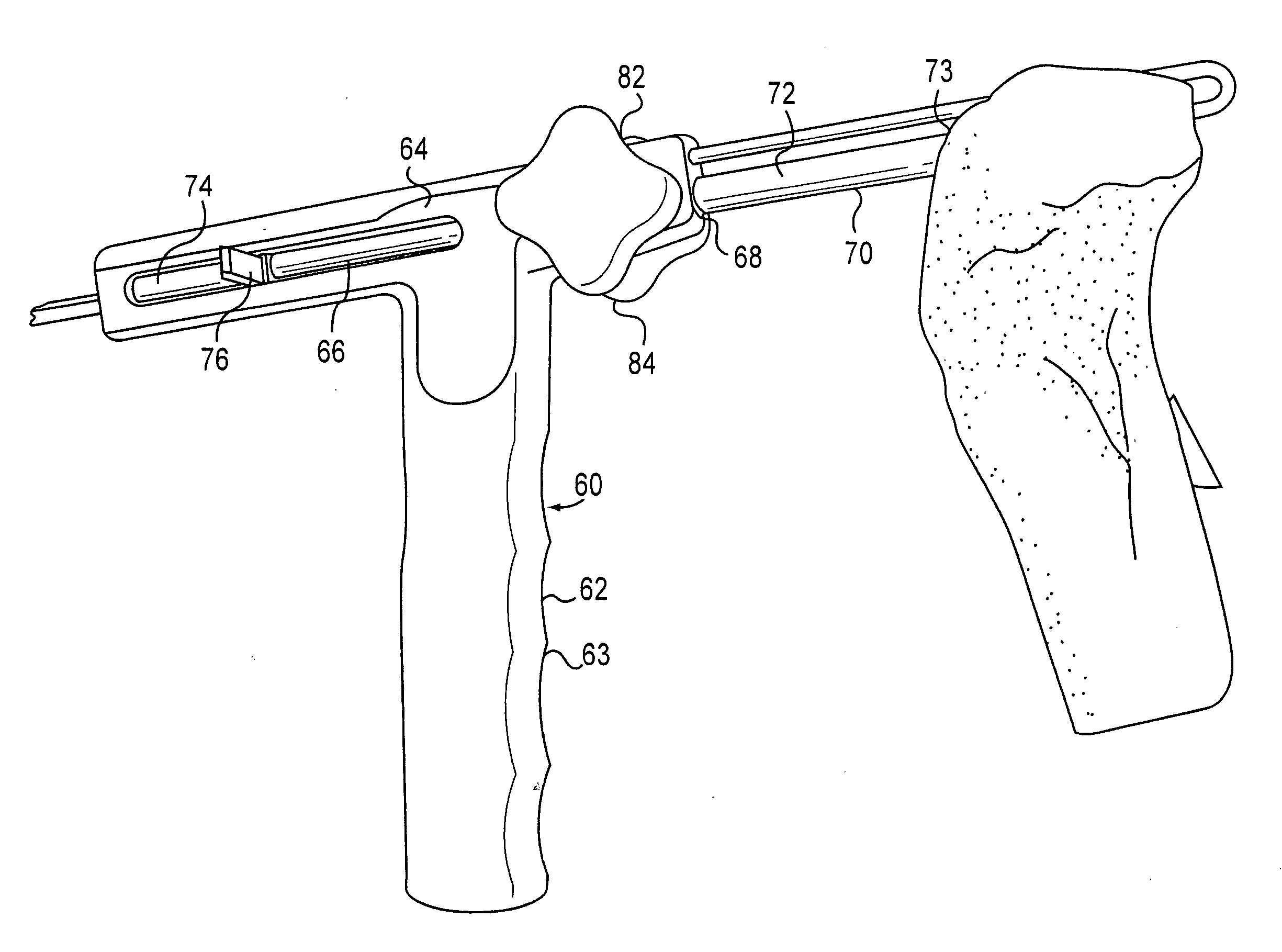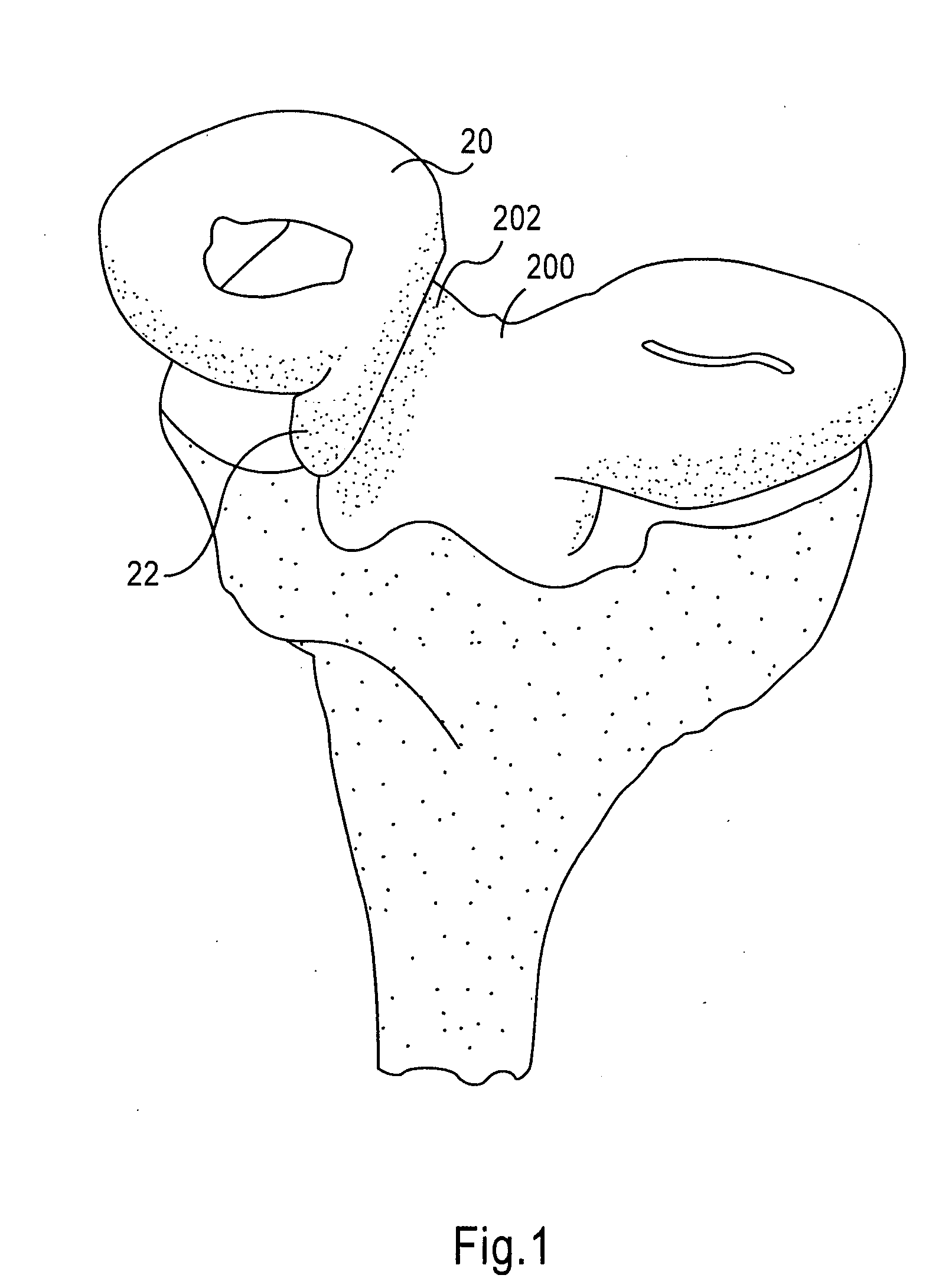Instrumentation and method for repair of meniscus tissue
a meniscus and instrumentation technology, applied in the field of human knee joint treatment, can solve the problems of limiting mobility, reducing knee stability and knee locking, and reducing function,
- Summary
- Abstract
- Description
- Claims
- Application Information
AI Technical Summary
Benefits of technology
Problems solved by technology
Method used
Image
Examples
Embodiment Construction
[0033]The preferred embodiment and best mode of the present invention is shown in FIGS. 1 through 10
[0034]As shown in the drawings, an allograft meniscus implant 20 utilizing a bone base 22 is shown mounted in groove 202 of tibia 200 as is shown in FIG. 1 in accordance with the present invention. Another embodiment in an allograft meniscus 300 having circular posts 302 is shown in FIGS. 11 and 12.
[0035]The surface of bone base can be modified by acid treatment to remove a layer of the inorganic, mineral material in such a way as to leave the mechanical properties substantially unchanged or to provide a construct having suitable compression and bending strength. This allows the addition of BMP's and other desirable additives which are more fully set forth herein to be introduced to the surface and thereby enhance the healing rate of the cortical bone in surgical procedures. The process also exposes the naturally occurring BMP's near the surface and renders the surface with biological...
PUM
 Login to View More
Login to View More Abstract
Description
Claims
Application Information
 Login to View More
Login to View More - R&D
- Intellectual Property
- Life Sciences
- Materials
- Tech Scout
- Unparalleled Data Quality
- Higher Quality Content
- 60% Fewer Hallucinations
Browse by: Latest US Patents, China's latest patents, Technical Efficacy Thesaurus, Application Domain, Technology Topic, Popular Technical Reports.
© 2025 PatSnap. All rights reserved.Legal|Privacy policy|Modern Slavery Act Transparency Statement|Sitemap|About US| Contact US: help@patsnap.com



